Everybody knows that wearing a helmet while biking is mandatory! Riding on the roads, a helmet alone is probably enough, but you should consider wearing more protection when you spice up your eMTB ride with roots, rocks and steeps. In this guide, we explore the products that will protect you and stay comfortable enough for a big day out on your bike.

A crash happens in a split-second. It might be caused by that slick root, or that loose rock that kicks you off line and sends you straight over the bars. Yes, eMTBing is a risky sport but if you prepare correctly, you can minimise those risks dramatically. Crashes usually follow the same sequence of events and there are certain areas of your body that will have to deal with the impact first. Therefore, it is vitally important to protect your head, hands, knees and back, and, if you want to go all in, your elbows too. In a market saturated with options it can be hard to find the best protection for you and your riding, so in this guide we will take you through what’s available to make your riding as safe and enjoyable as possible!
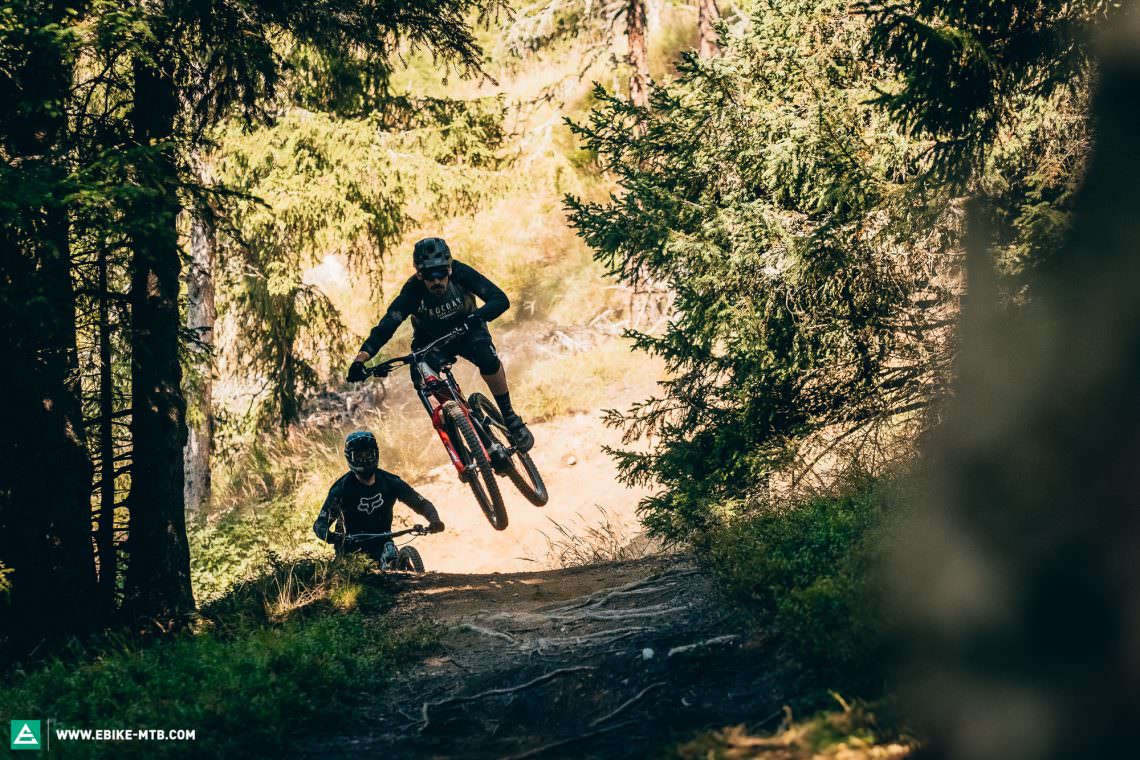
What kind of helmet should I wear when I’m out on the trails with my eMTB? Are knee pads worth the money? And why should I even wear them? Do I need a back protector as an eMTBer? Do gloves make sense? Over the next few pages, you’ll find out more about how to protect yourself, what’s essential and what you should consider. You can also find out more about our favourite protection for when we go riding.
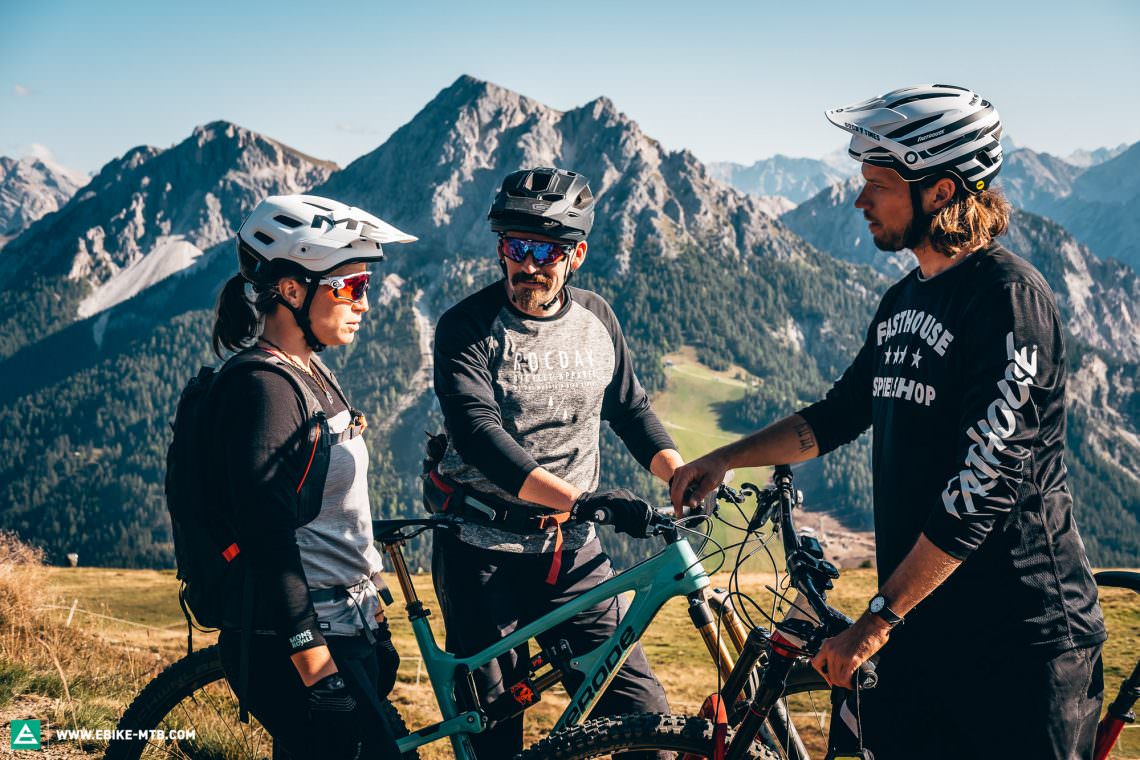
What type of helmet should I wear for riding trails on my eMTB?
Helmets designed for cycling can be grouped into four different categories. The classic open face helmet, new school helmets with extended coverage at the back and side of your head, the classic full-face helmet and convertible full-face helmets with detachable chin guards. In all of these categories, innovation has resulted in more protective, lighter and better ventilated options over the years.
The “conventional” MTB open face helmet
The basic design for open face MTB helmets has remained the same for quite some time, though over the years, coverage, fit, safety and ventilation have all been improved. Nowadays, open face helmets are suited to a wide range of applications, from touring to trail riding and beyond. Helmets in this category should be light, well ventilated and comfortable to wear all day. If you ride technical terrain, look for a helmet with extended coverage for the back of your head and a good retention system. Remember, a helmet is only as good as its fit, so it’s super important to try a number of options and pick the one which feels the most secure. Another important feature to look out for when choosing an open face helmet is whether it incorporates rotational impact protection, such as MIPS. These technologies work by having an extra shell or liner inside the helmet that moves independently of the hard outer shell, allowing it to better absorb rotational impacts. An important practical consideration is to check that the helmet is compatible with your riding glasses.
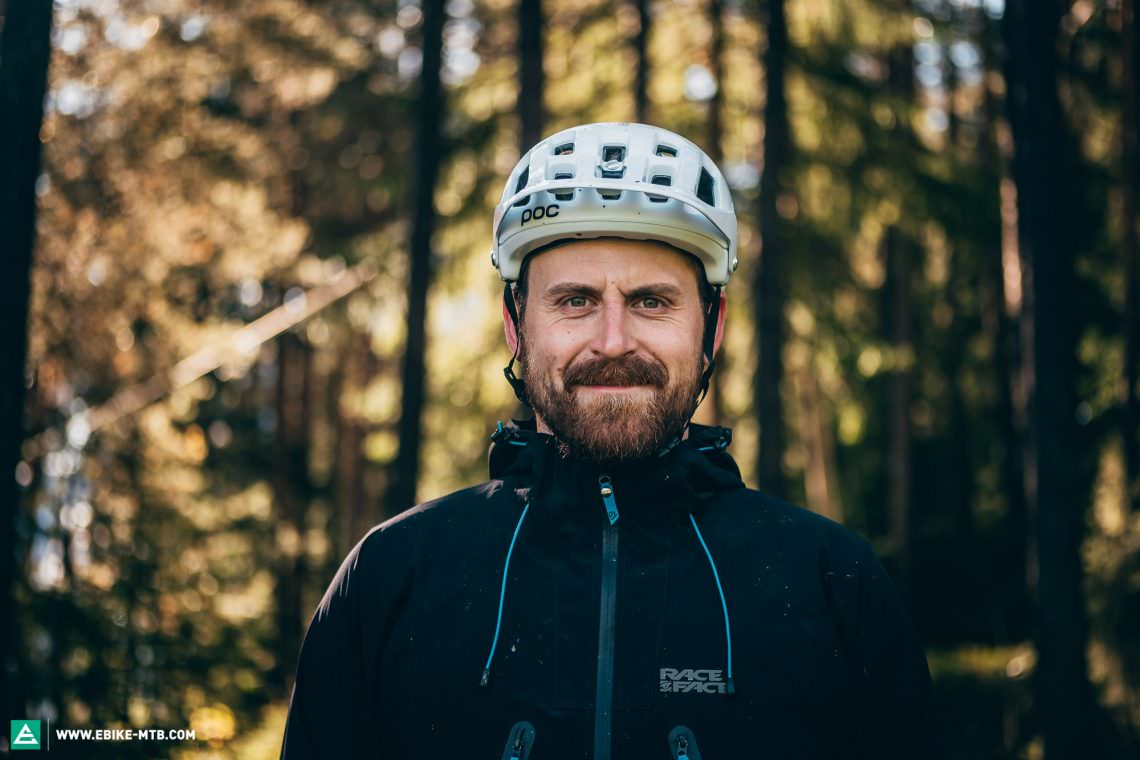
Tops
- usually the lightest and most ventilated option (model depending)
- very comfortable, even on long rides
- adjustable fit
Flops
- some designs offer limited protection for the back of your head
- the fit is not as secure as full-face or trials-style helmets
Our choice*: Bell Sixer MIPS, POC Kortal Race MIPS, MET Roam MIPS and Specialized Ambush 2
*We aren’t claiming these to be the safest helmets out there, but these models are very popular amongst our editorial team and test riders.
The full face helmet
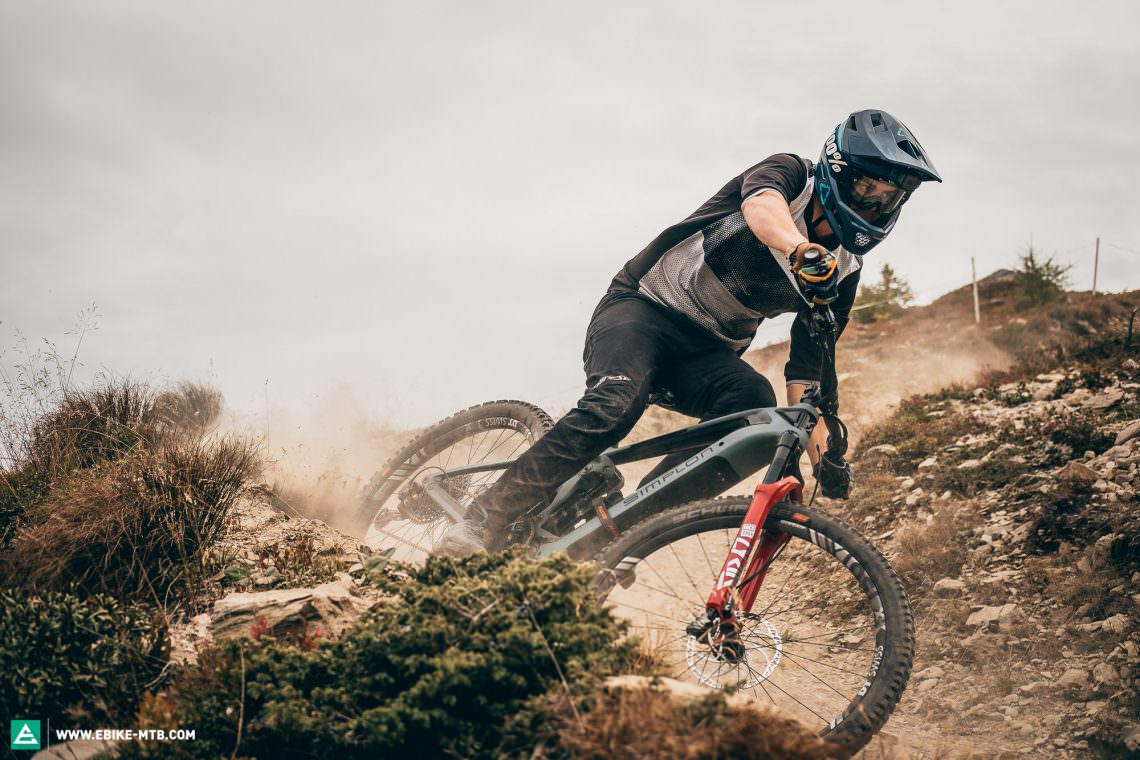
Nothing can offer as much protection for your head as a certified full face helmet, which passes the full face specific ASTM F1952-15 certification criteria. The full coverage, secure fit and strength of these helmets are what sets them apart from the rest. However, the added coverage that a full-face helmet provides is a double-edged sword anytime you are not hurtling down a challenging descent. Most full-face helmets get very sweaty on the climbs and can feel claustrophobic after long periods of use. That’s not least due to the fact that they’re usually at least twice as heavy as their open-face counterparts. They can also look somewhat intimidating to other trail users and pedestrians. Luckily for trail riders, there is a new kid on the block – the “light” full face. Helmets in this category still provide full coverage of your head and face, but are worlds apart from their heavier counterparts when it comes to weight and ventilation. When choosing a full-face helmet for trail riding you should ensure it is certified for downhill use and make sure to try it for size before you buy as most options do not have an adjustable retention system.
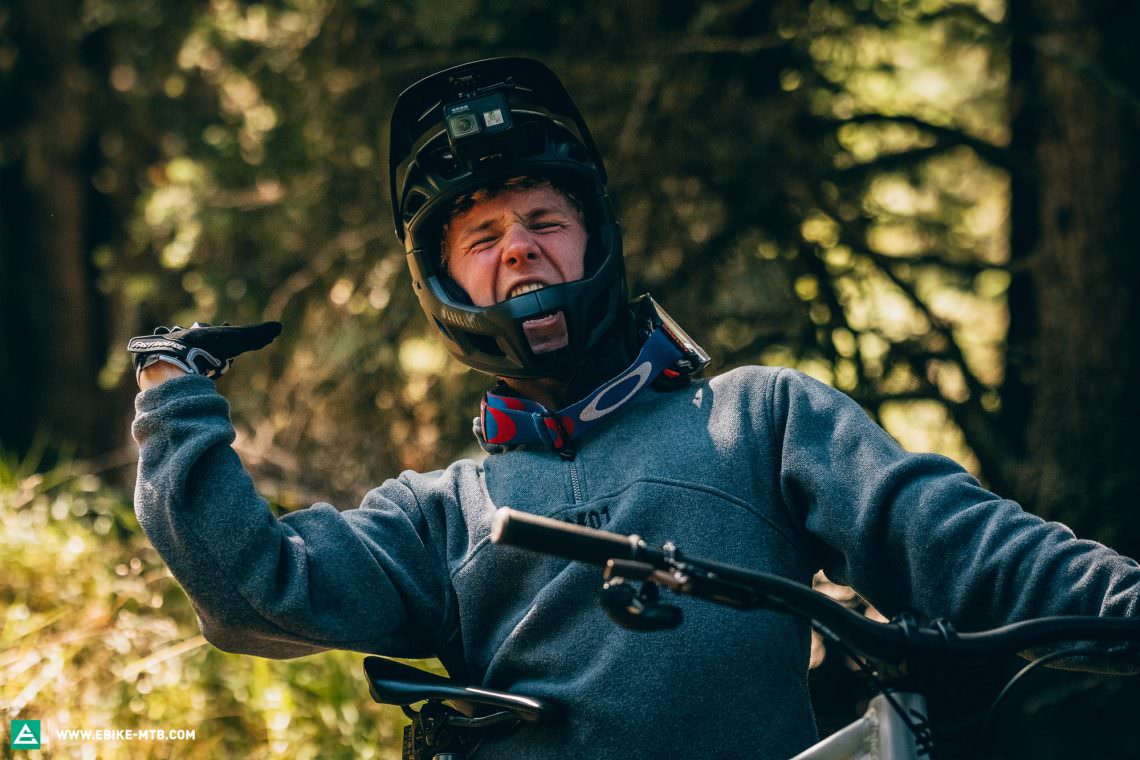
Tops
- maximum coverage and protection
- secure fit
- instils confidence in challenging terrain
Flops
- warmer and heavier than open face helmets
- can feel claustrophobic
- harder to communicate and can come across as intimidating
Our choice*: Fox Proframe, Leatt DBX 4.0, Dainese Linea 01 MIPS and Troy Lee Designs Stage
*We aren’t claiming these to be the safest helmets out there, but these models are very popular amongst our editorial team and test riders.
The convertible full face helmet

As the name suggests, convertible full face helmets theoretically offer two helmets in one thanks to the removable chin piece. The best options give good comfort and ventilation on the climbs in their open face configuration, paired with good safety whilst descending with the chin piece attached. However, there are big differences in this field, from fully downhill certified helmets to options where the chin guard serves almost no practical purpose. If you choose to go with a convertible full face, we recommend you invest in a certified model. A downhill certified convertible full face that can be quickly transformed into an open face for climbing is a great option for those who ride both challenging singletrack and big climbs on their eMTB, provided they have somewhere to store the chin piece on the way up.
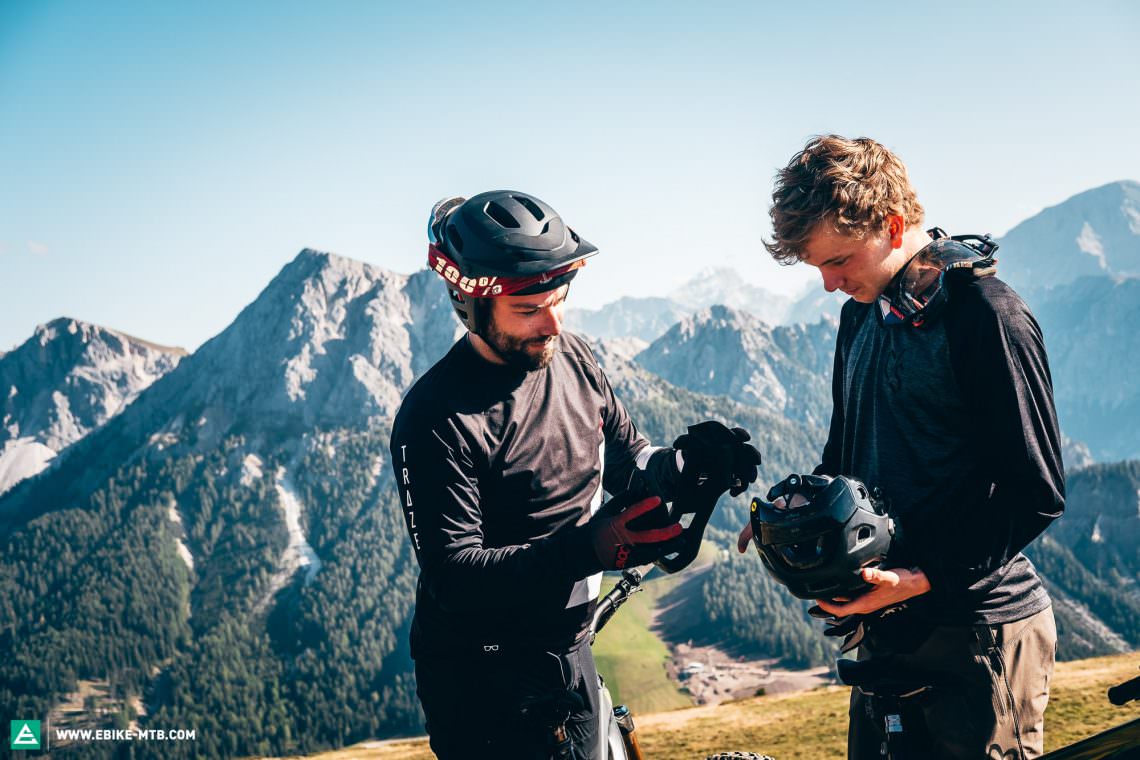
Tops
- the best options really do offer a 2-in-1 package
- full face coverage on the descents instils confidence and increases safety
- removable chin piece increases comfort and ventilation on the climbs
Flops
- chin piece has to be stored somewhere whilst climbing
- non downhill certified options can be very weak and offer little protection
Our choice*: Giro Switchblade MIPS, MET Parachute MCR and Bell Super DH Spherical
*We aren’t claiming these to be the safest helmets out there, but these models are very popular amongst our editorial team and test riders.
The new-school open face (trials style)
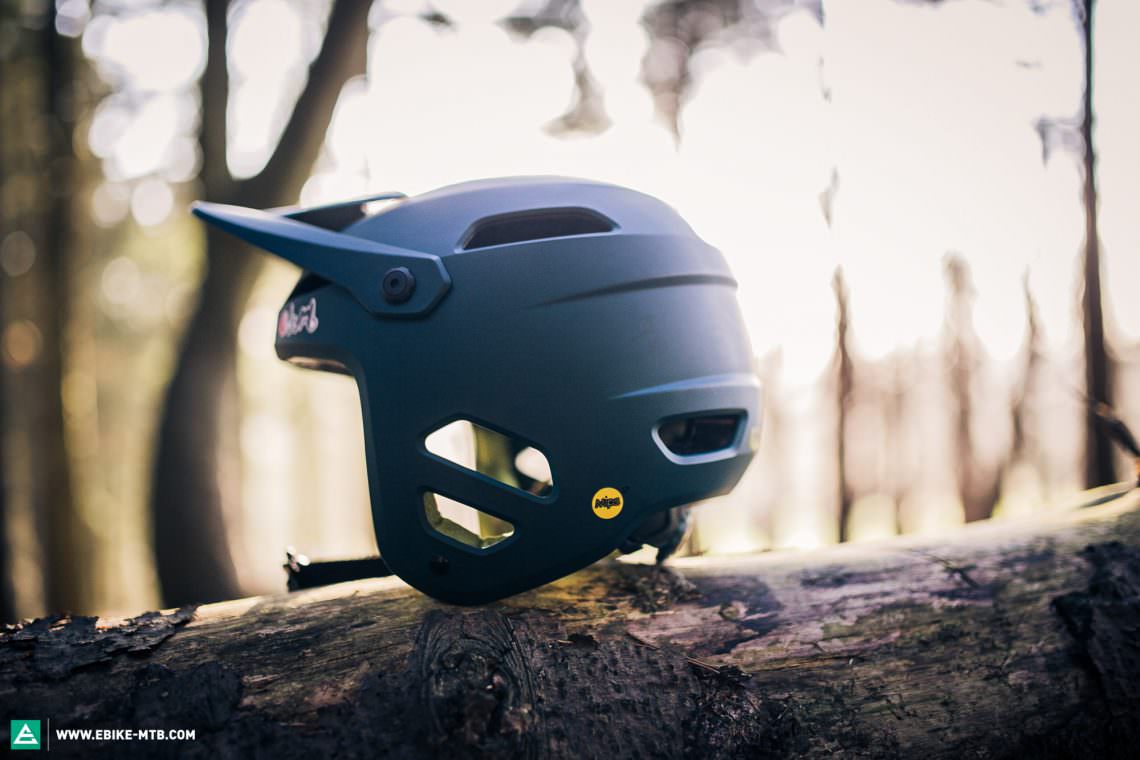
Last year, a new type of open face helmet appeared on the market. These helmets almost resemble a full face with its chin piece removed and pay homage to the design of trials motorcycle helmets. Due to their shape, these helmets offer extended coverage for the back of the head, as well as dropping down on the sides to protect the ears and temples. While these helmets still can’t compete with the complete coverage of a full face, they do offer a middle ground by offering extended coverage and a more secure fit when compared to conventional open face lids.
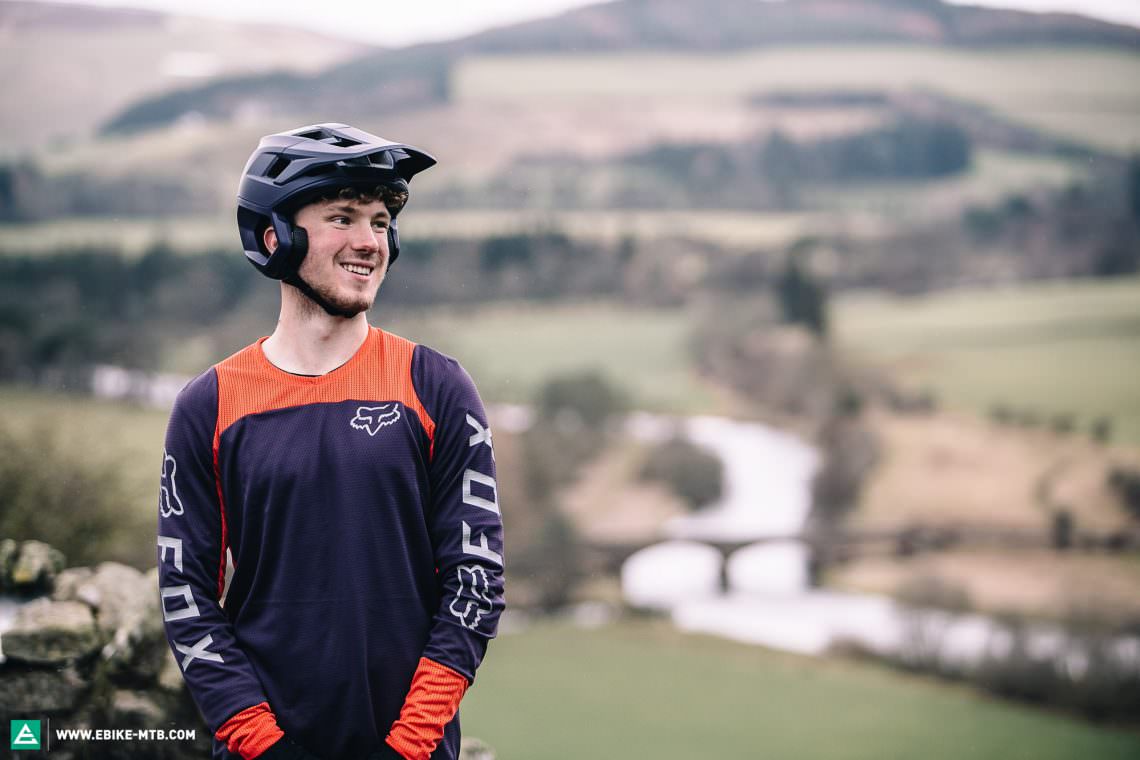
Tops
- offer extended coverage around the back of the head, ears and temples
- more secure fit than conventional open face options due to increased coverage
- better ventilated and less claustrophobic than a full face
Flops
- can’t protect your face like a full face helmet
- heavier and less ventilated than an open face helmet
Our choice*: Giro Tyrant MIPS and Fox Dropframe Pro
*We aren’t claiming these to be the safest helmets out there, but these models are very popular amongst our editorial team and test riders.
Choosing a helmet
When choosing your helmet you should carefully consider what trails you ride and how much time you spend climbing, as well as the conditions you ride in. If you are unsure, your local bike shop or even the trails are great places to start gathering advice. We recommend finding the option that provides the necessary level of protection, while offering the most comfort, best fit and most effective ventilation you can find. At the end of the day, the best helmet is the one that you will happily wear every time you go out for a ride, because if you’re not wearing it, it won’t do anything at all.
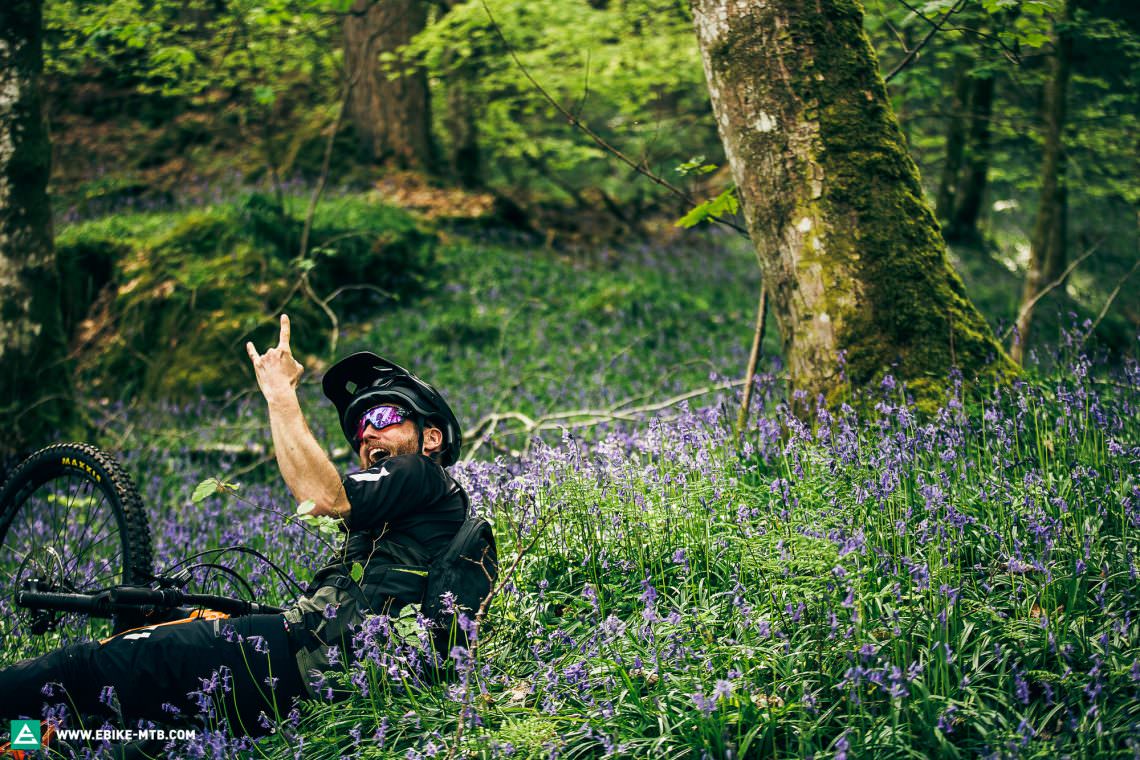
How to find the right protector
Are knee pads worth it? Why should I wear them?
Pads, guards, protection… Whatever you choose to call them, we recommend some form of knee protection to anyone riding their eMTB off road. In almost every crash imaginable, it’s your knees that are amongst the first body parts to make contact with the ground. For this reason, we strongly advise picking the pads that suit your riding, as these will give you the best compromise between comfort and protection.
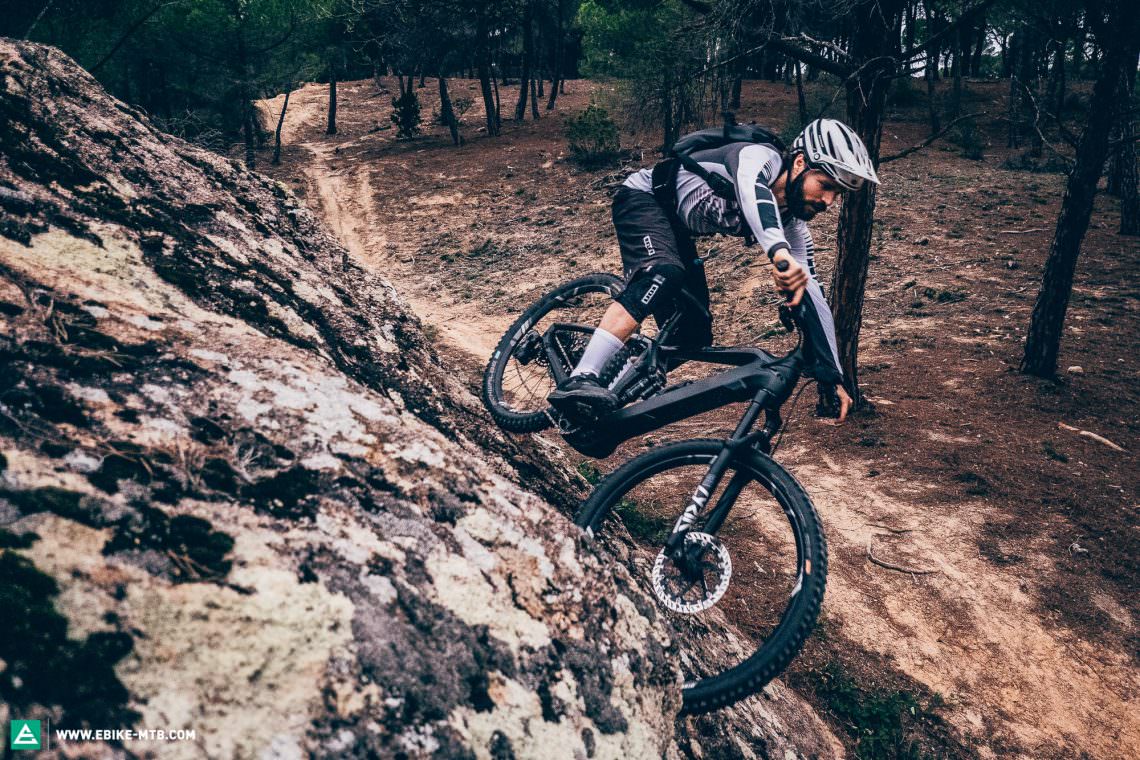
All knee pads worth considering should meet the EN 1621-1:2012 standard for limb joint impact protection. Pads that meet this standard fall into two levels – Level 1 and Level 2. The classification is determined by testing the pads with a 5 kg weight, dropped from a height of one metre onto three different impact points. A hemispherical anvil models the knee joint while a number of sensors measure the transmitted force. For a Level 1 pad, the average residual force must not exceed 35 kN and no single impact should exceed 50 kN. For Level 2, the average residual force must remain below 20 kN, and no single impact should exceed 30 kN.
Not sure what type of knee pad you need? Keep reading!
Lightweight pedal-friendly pads
These pads use a slip-on design (usually without straps) to maximise comfort and ventilation. The best pads use an impact-absorbing memory foam insert, which stay soft and malleable (especially once warmed up by body heat!) when not needed, but instantly harden to absorb forces in the event of an impact. Using technology like D3O or SAS-TEC allows manufacturers to create knee pads that combine great protection with enough comfort for sustained climbing and long rides. If long and technical singletrack rides and off-piste trails are your cup of tea, these are the type of pads we’d recommend! However, beware of pads that only feature a soft foam insert, which only offer minimal protection against scrapes and bruises.
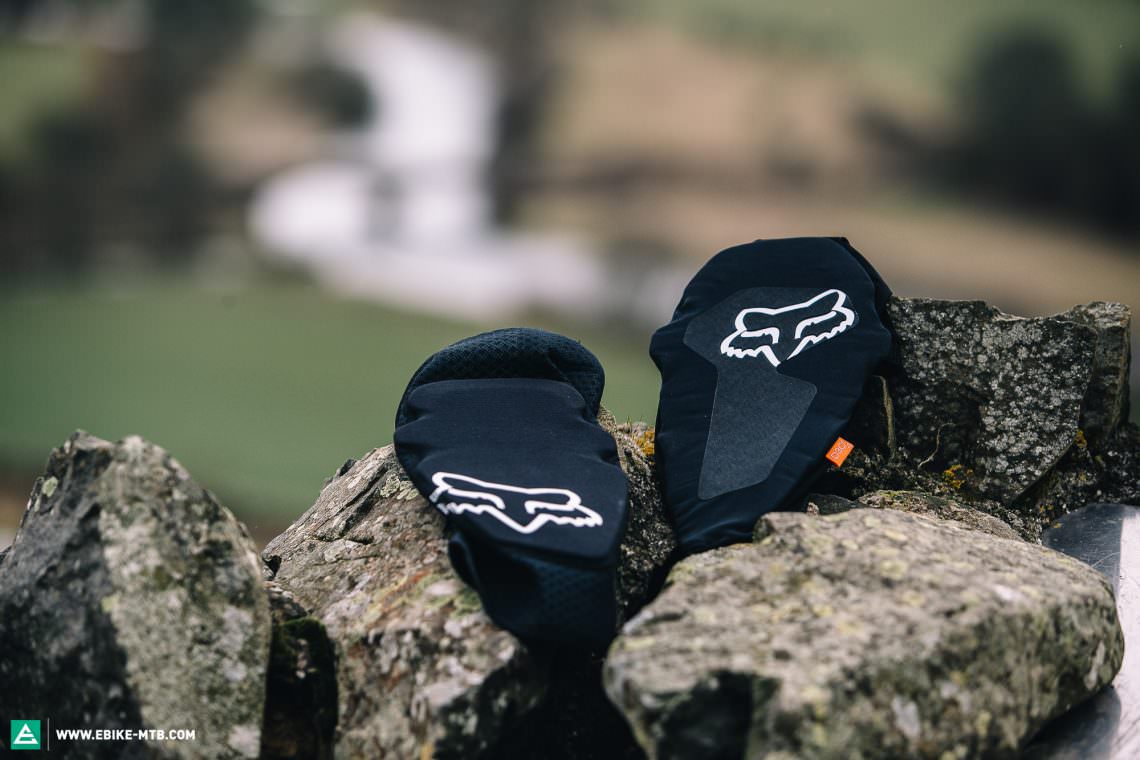
Our choice*: Fox Enduro Pro, ION Traze and POC Joint VPD System Knee
*We aren’t claiming these to be the safest helmets out there, but these models are very popular amongst our editorial team and test riders.
Heavy-duty protection
If you only ever pedal for the gnarliest descents or frequently take your bike to a bike park, you’ll want to invest in a set of heavy-duty knee pads. Knee pads in this tier of protection should meet the above mentioned EN 1621-1:2012 Level 2 standard and feature a thick protective insert to cover the front of the knee, as well as smaller pads that provide some protection to the sides. Some pads may even have a hard plastic cap over the knee to aid sliding in the event of a high-speed crash. Another important feature is the adjustment straps at the top and bottom of the pad, which let you fine-tune fit for maximum security. While it is still possible to climb in pads like these, the increased warmth and weight will be noticeable. But what about hard plastic protectors? While hard-shell plastic pads may look tough, they actually offer less protection and absorb less of the impact than memory foam inserts like D30 and SAS-TEC.
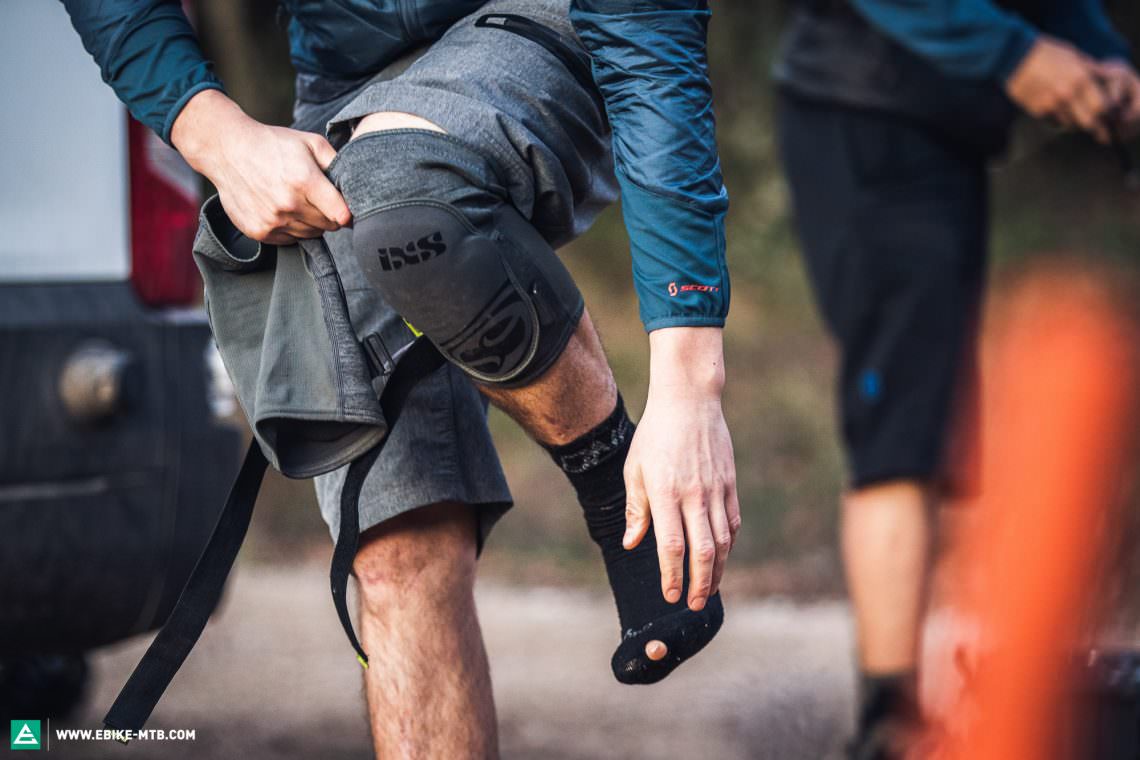
Our choice*: ION K-Pact Zip, Fox Launch D30 and iXS Carve EVO+
*We aren’t claiming these to be the safest helmets out there, but these models are very popular amongst our editorial team and test riders.
What about elbow pads?
Elbow pads are a marmite topic in the mountain biking and eMTB world. A lot of riders, including us, prefer the feeling of riding without them, but it makes sense to get some if it makes you feel more comfortable. If you are prone to elbow injuries or want to be as safe as possible, elbow pads are a great option that shouldn’t be overlooked. We recommend a modern pad with a memory foam insert for the best protection and comfort.
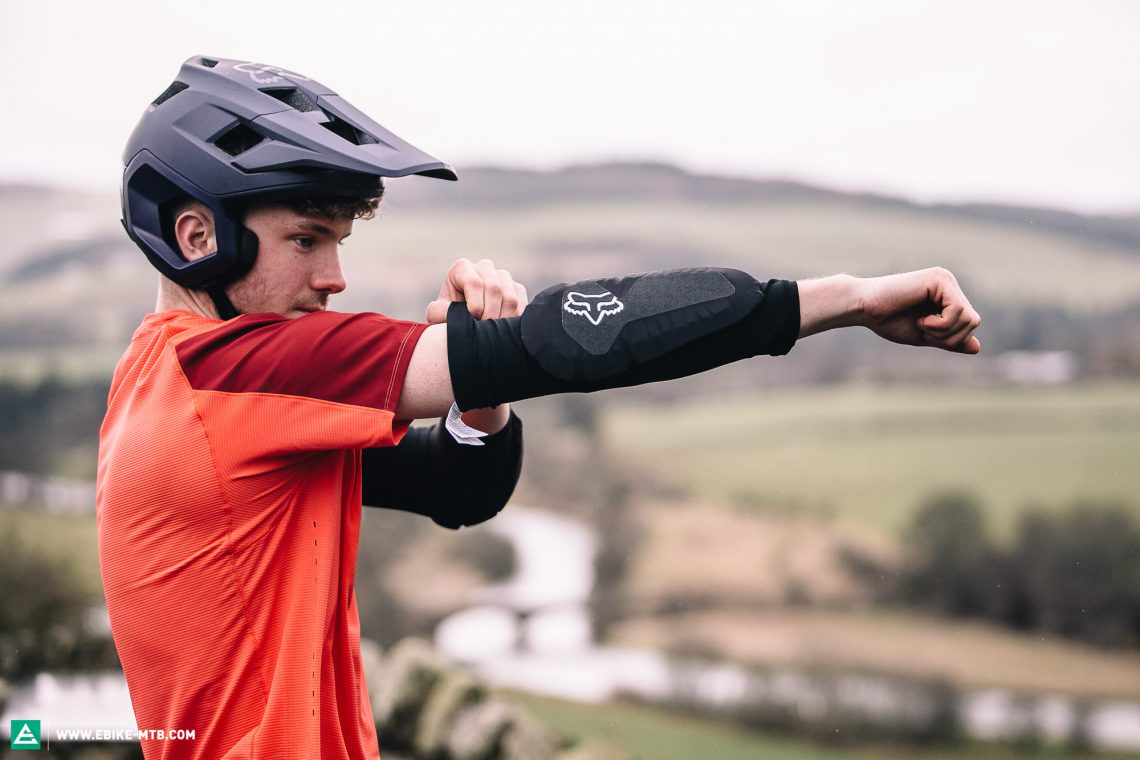
Our choice*: Fox Enduro Pro D30 Elbow and POC Joint VPD System Elbow
*We aren’t claiming these to be the safest helmets out there, but these models are very popular amongst our editorial team and test riders.
What gloves should I wear?
What riding gloves you should use depends on your personal preference, but we can point you in the right direction. At the end of the day, any glove is better than no glove in a crash. If you only ride tours on fire roads or cycle paths, a half finger glove with gel pads might be the most comfortable option for you. For anyone riding their eMTB off road, we recommend a full-length glove with a thin palm for better feel of the grips and controls and to maintain flexibility, together with some form of thin padding for the knuckles and fingers to offer protection against branches and foliage. In the end, here it’s also about the compromise between ventilation, fit and protection. It’s worth trying gloves before you buy and to make sure there are no uncomfortable seams which will irritate you when riding.

Our choice*: Fox Defend Gloves, Troy Lee Designs Sprint and POC Resistance Enduro
*We aren’t claiming these to be the safest helmets out there, but these models are very popular amongst our editorial team and test riders.
Back protection for eMTB riders
Protection packs
Protecting your back is incredibly important. However, most back protectors come with a big compromise in comfort and ventilation, meaning that we rarely use one for technical trail riding, let alone touring and mellow singletrack. However, a number of backpack manufacturers have come up with a compromise by integrating a back protector into the pack itself. Brands like Deuter, EVOC, CamelBak and more produce great packs with integrated protection and are well worth a look if you like carrying more than just the bare essentials and want to protect your spine whilst doing so. There are a number of eMTB specific options out there which let you carry a spare battery in a specially designed compartment – great for extending your range on those long days in the saddle!

Our choice*: EVOC FR TRAIL E-RIDE and AMPLIFI E-Track 23 Tschugg LTD
*We aren’t claiming these to be the safest helmets out there, but these models are very popular amongst our editorial team and test riders.
Back protectors
Dedicated back protectors are totally recommended if you go riding in a bike park with more technical features and higher speeds. They have a more secure fit than protection packs and offer greater levels of safety. However, they are often very sweaty and aren’t compatible with backpacks. If you do choose to ride with a back protector, we would recommend looking into products that use D3O or similar, to ensure maximum comfort.
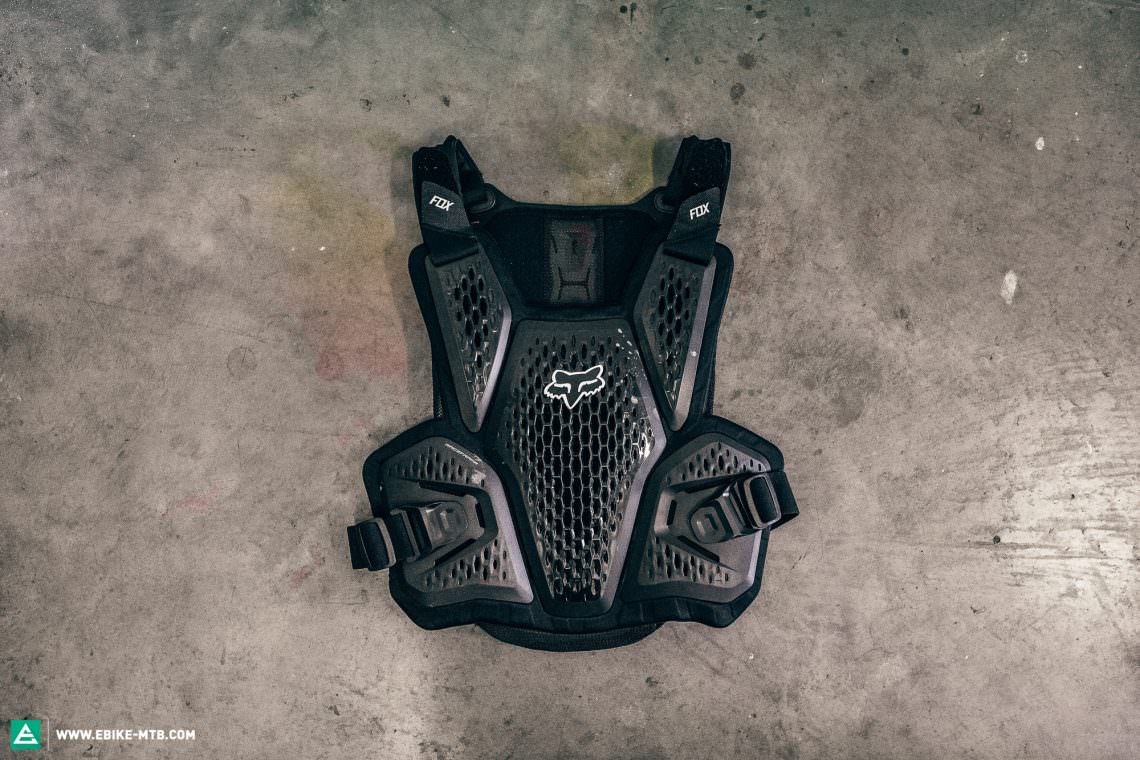
Our choice*: Bluegrass Seamless Lite D3O, Fox Raceframe Impact Soft und POC VPD System Back
*We aren’t claiming these to be the safest helmets out there, but these models are very popular amongst our editorial team and test riders.
We believe protection is a matter of personal preference and that at the end of the day, the best advice we can give you is that you should wear what you feel most comfortable in and what allows you to ride actively and have the most fun. Our aim is to educate you on the types of products available and let you make an informed final decision…
Furthermore, it’s important to mention that protection itself is only one part of the whole. How you crash makes a huge difference as well. And yes, you can learn how to crash correctly. You can reduce the chances of injury with just a few techniques, but that’s a story for another time.
Did you enjoy this article? If so, we would be stoked if you decide to support us with a monthly contribution. By becoming a supporter of E-MOUNTAINBIKE, you will help secure a sustainable future for high-quality cycling journalism. Click here to learn more.
Words: Photos: E-MOUNTAINBIKE team









